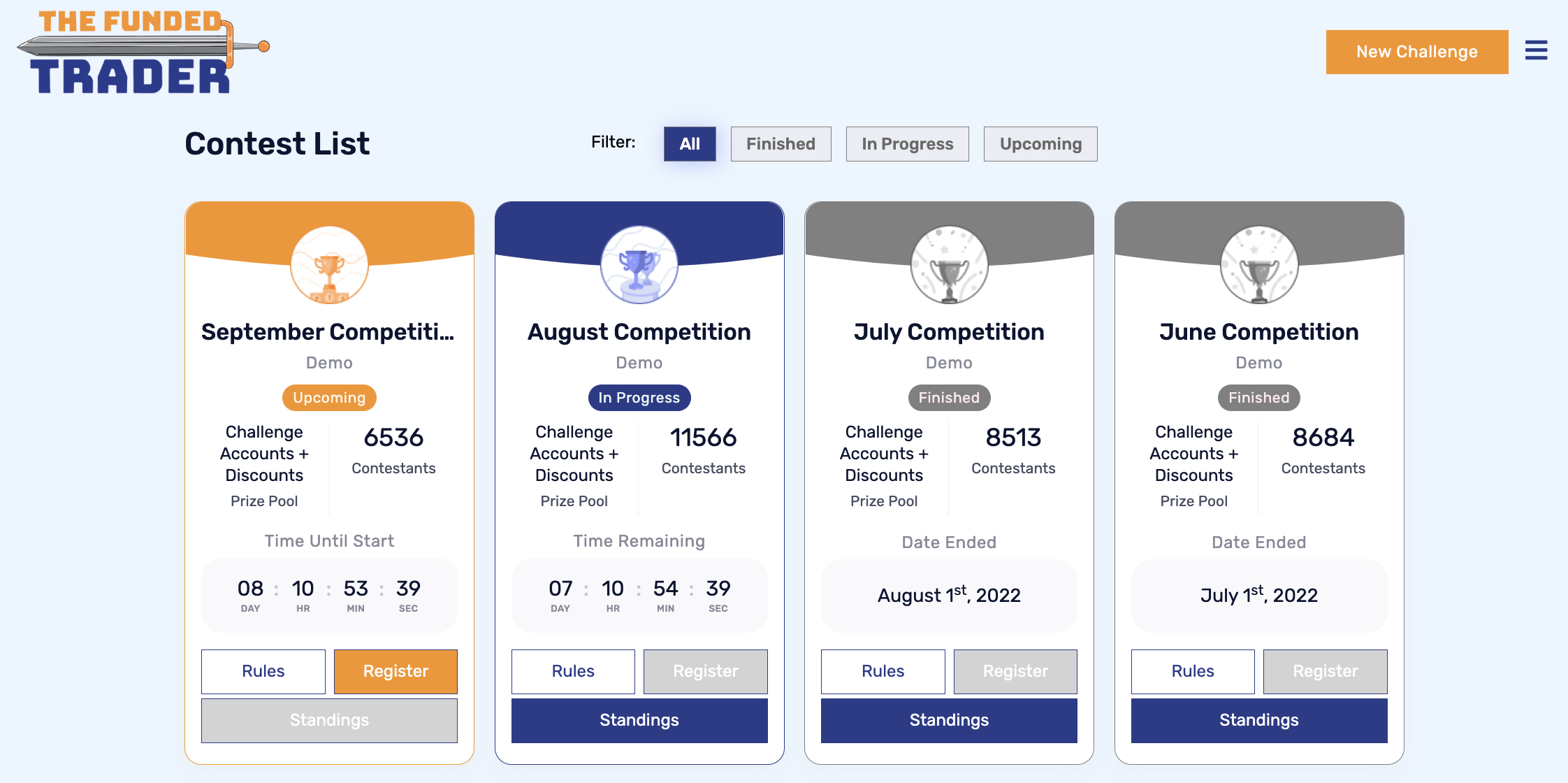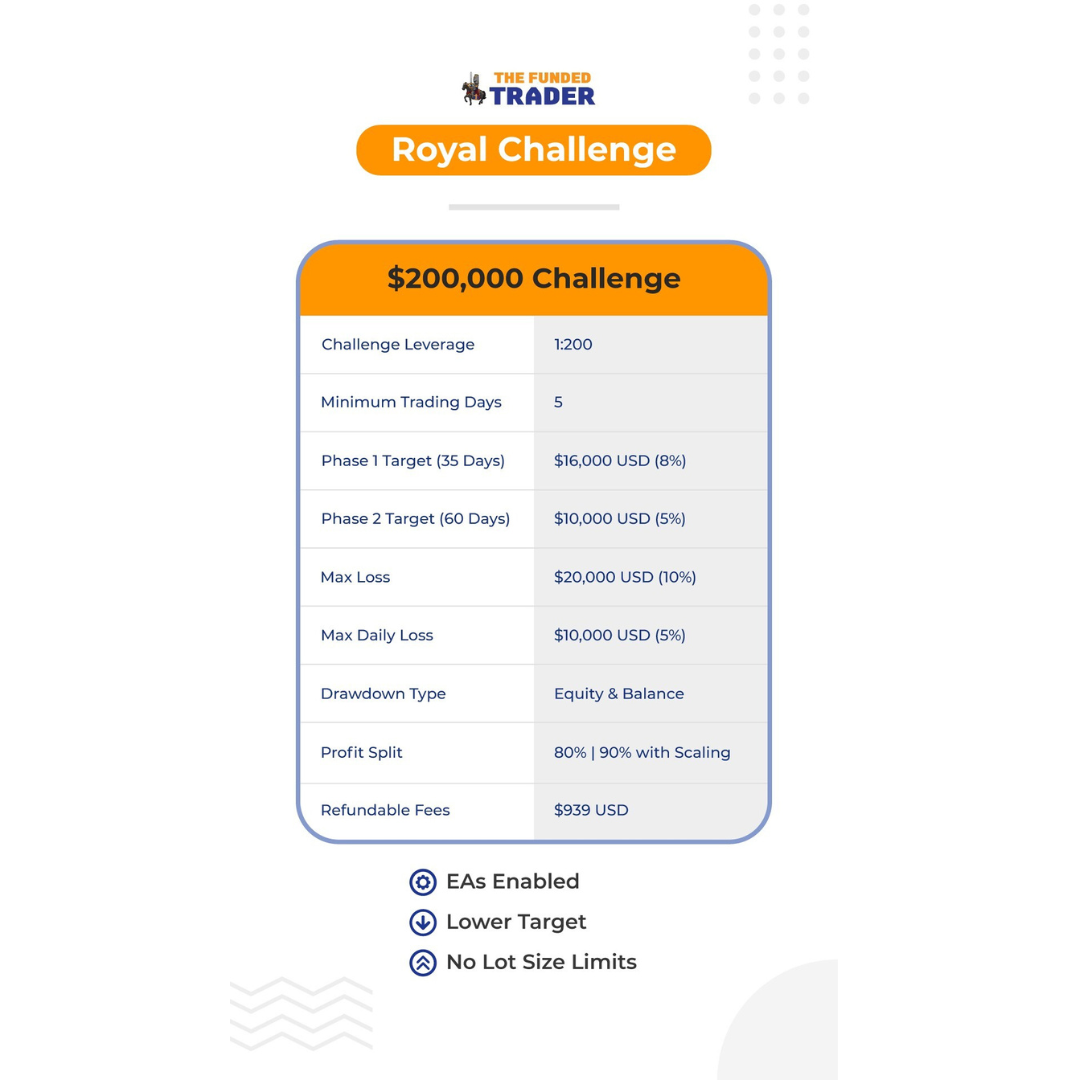Forex simulated Trading Strategies
When it comes to successful Forex trading, it is crucial to have a strategy and turn them into profitable forex simulated trading strategies. Whether your strategy is based on technical analysis or fundamental analysis, it is important to incorporate the 3 pillars of a profitable strategy into your simulated trading style.
The Funded Trader is here to help! We want to give you some tips about different pillars that you can incorporate into your simulated trading strategy.
3 Pillars of a Profitable Strategy
There are 3 Pillars to every and all profitable strategies and they are: Frequency, Win-Rate, and Risk to Reward Ratio.
We can define Frequency as the amount of instances a trade setup presents itself during a given period of time.
We can define Win-Rate as the percentage of instances our virtual profit target has been hit relative to the amount of instances our stop loss has been hit.
Finally, we can define Risk to Reward Ratio as being the amount risked, relative to our realized gain.
What this all means is that, whenever we evaluate a strategy these are the metrics we should be paying attention to in order to ultimately calculate our Expected Value.
Frequency
To determine frequency we need to determine our set in order to find our variable. Our frequency set is a period of time in which trade setups will occur and our variable is the number of setups that occur within the set.
A set can be an hour, day, week, month, year….etc
So we can define our frequency as:
10 trades within a week
40 trades within a month
480 trades within a year
This is important because we will be able to use the frequency of trade setups to create realistic expectations and goals in our simulated trading plan.
Win-Rate (WR)
Win-Rates are often expressed in percentages like this: “50%”. The easiest way we can calculate a win rate is through cross multiplication.
I will explain below:
Adam takes 36 trades and of those trades only 12 hit his Take Profit. What is his WR?
Well we need to start by identifying the set and the variable
The set is the total amount of trades taken
And
The variable is the amount of trades won
We can express this relationship as “variableset”
and when we substitute we get 1236
But that doesn’t give us our win-rate percentage, so we need to set the denominator equal to 100 to convert to a percentage. This is how it can be done:
1236=x100
12 * 100 = 1,200
36 * x = 36x
36x36=x 120036=33
X = 33
Win-Rate = 33%
Using this method you will always be able to calculate your WR.
Risk to Reward Ratio (RRR)
In this section, we want to break down how a trader should use the risk-to-reward ratio. The best way to do this is by showing you some formulas and examples of a good rule to keep in mind when using the RRR.
Risk to Reward Ratios are often expressed like this: “1:2”, meaning 1 risk = 2 rewards or “1:5” meaning 1 risk = 5 rewards.
Let’s make use of some variables to further understand this concept.
Given an RRR of 1:2 and a static risk parameter of 0.5% per trade, What is our expected value after 1 trade assuming a 100% win rate, when managing a $100k account?
The answer is $101,000 I will explain algebraically:
X is defined as the percentage risked
Let X = 0.5
Solve: 1(x):2(x)
Substitute your defined risk parameter into RRR expression
1(0.5):2(0.5) = 0.5:1
*this means we are risking 0.5% to gain 1%*
Now we take our original balance of 100,000 and add our realized gain of 1,000 to get $101,000.
You may ask now, why does this matter?
Well it matters because as Traders we realize that we aren’t going to have a 100% win-rate, so having a positive risk to reward ratio protects us against inevitable losses.
If we were to change a few parameters from our previous question we can shed some light on the power of a positive RRR.
So let’s do that:
Given an RRR of 1:2 and a static risk parameter of 0.5% per trade, What is our expected value after 10 trades assuming a 50% win rate, when managing a $100k account?
The answer is $102,500, I will explain algebraically
X is defined as the percentage risked
Let X = 0.5
Solve: 1(x):2(x)
Substitute your defined risk parameter into RRR expression
1(0.5):2(0.5) = 0.5:1
*we know our strategy works 50% of the time so we can assume 5 wins and 5 losses from our total of 10 trades
So let’s multiply our percentage gain (1%) by the amount of expected wins (5)
We get a 5% gain, but we haven’t accounted for our expected losses yet, so let’s do the same thing for the losses
So let’s multiply our percentage risked (0.5%) by the amount of expected losses (5) from our total of 10 trades
We get a loss of 2.5%
Subtract expected loss from expected gain:
5% – 2.5% = 2.5% expected percentage gain
Now that we have our expected percentage gain we can simply Multiply our starting balance (100,000) by our expected percentage gain (2.5%) and get our Expected Value.
I’ll express this algebraically:
2.5% = 0.025
100,000 * 0.025 = 2,500 or 100,000 * 1.025 = 102,500
100,000 + 2,500 = 102,500
Now that we have an understanding of how to simply calculate Expected Value we can set realistic expectations and goals, as well as benchmark our performance against what is statistically possible.
Take note that even though we are losing half of our trades we are still profitable because of our Risk to Reward Ratio.
Incorporating all 3 pillars of a profitable strategy
When it comes to trading, every trader has a different method of how they trade. One thing that is for certain is that the most successful traders will tend to incorporate all of the 3 different techniques that we discussed above.
Even if you choose to not use the RRR, WR, or Frequency it is still important to understand these different formulas and what they mean. There are metrics that every trader should be paying attention to and without a proper simulated trading strategy, then you risk blowing your account.
Educational Forex Resources
Our goal is to make sure that everyone who tries “The Funded Trader Program” is successful. Unfortunately, that’s not the reality of trading, but we want to offer as many tools and tips to help every trader. We will continually bring you educational content that you can use while trading.
By incorporating our tips and the 3 pillars of a profitable strategy, then it will put you ahead of many beginner traders because understanding and using RRR, WR, and Frequency are crucial components in forex trading.
For more information about “The Funded Trader Program”, CLICK HERE
For more resources like this, CLICK HERE
Forex Strategy Builder Professional Crack























